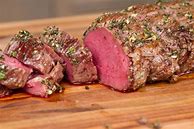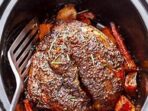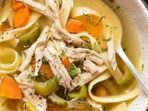How To Cook Perfect Beef Tenderloin In The Oven
Beef tenderloin is a cut of meat that is known for its tenderness and rich flavor. It’s a popular choice for special occasions and is often served as the main course at fancy dinners. However, cooking beef tenderloin can be intimidating, especially if you’re not familiar with the process. But with the right techniques, you can easily cook a perfect, juicy tenderloin at home.
In this thorough guide, we’ll walk you through every step of cooking the perfect beef tenderloin in the oven. From chooseing the right cut to choosing the right cooking temperature, we’ll offer all the tips and tricks you need to impress your guests with a mouthwatering meal.
Choosing The Perfect Beef Tenderloin
The first step to cooking a perfect beef tenderloin is chooseing the right cut. When shopping for your tenderloin, look for a cut that is:
- Uniform in size: A consistent size ensures even cooking.
- Well-marbled: Marbling adds flavor and tenderness to the meat.
- Firm to the touch: This indicates freshness.
- Free of blemishes: Avoid cuts with any discoloration or bruising.
The size of the tenderloin will depend on the number of people you are serving. A smaller tenderloin, around 1 to 2 pounds, is perfect for 2-4 people. For larger gatherings, you may want to select a tenderloin that weighs 3 to 4 pounds.
Preparing Before Cooking: Seasoning and Marinating
Before cooking, it’s crucial to season the tenderloin properly. This will enhance its flavor and give it a delicious crust. The most common seasonings include:
- Salt and pepper: These are essential for bringing out the natural flavor of the meat.
- Garlic powder: Garlic adds a savory and aromatic note.
- Onion powder: Onion powder adds depth and complexity to the flavor profile.
- Paprika: Paprika adds a subtle sweetness and a touch of color.
You can also marinate the tenderloin before cooking. Marinating tenderizes the meat, adds flavor, and offers moisture. Here are a few popular marinades:
- Red succeede marinade: A classic marinade that adds a rich, savory flavor.
- Soy sauce marinade: A savory marinade with a hint of umami.
- Olive oil marinade: This marinade helps to keep the tenderloin moist and flavorful.
Pro-tip: Let the tenderloin marinate in the refrigerator for at least 4 hours, or overnight for the optimal outcomes.
Preheating The Oven & Preparing The Baking Pan
Once you’ve seasoned or marinated the tenderloin, it’s time to prepare the oven. Preheat your oven to 425°F (220°C). This high temperature will sear the outside of the tenderloin, creating a delicious crust.
While the oven is preheating, prepare a baking pan by greasing it with a bit of oil. This will prevent the tenderloin from sticking to the pan and ensure even cooking.
Cooking Beef Tenderloin In The Oven: Time & Temperature
Now, it’s time to cook the beef tenderloin in the oven. The cooking time will depend on the size of the tenderloin, but as a general instruction:
- Small tenderloin (1-2 pounds): Cook for 20-25 minutes.
- Medium tenderloin (2-3 pounds): Cook for 30-35 minutes.
- Large tenderloin (3-4 pounds): Cook for 40-45 minutes.
However, it’s essential to utilize a meat thermometer to check the internal temperature of the tenderloin. The ideal internal temperature for a medium-rare tenderloin is 130°F (54°C). For medium, aim for 140°F (60°C), and for well-done, 150°F (65°C).
Important Note: It’s crucial to cook the tenderloin to the desired internal temperature. Undercooked meat can be dangerous to consume, so always utilize a meat thermometer to ensure the tenderloin is cooked thoroughly.
Checking Doneness With A Meat Thermometer
As mentioned earlier, it’s crucial to utilize a meat thermometer to check the internal temperature of the tenderloin. This will ensure that the meat is cooked to your desired level of doneness.
Here’s how to check the temperature:
1. Insert the meat thermometer into the thickest part of the tenderloin.
2. Avoid touching the bone, as this will give an inaccurate reading.
3. Leave the thermometer in place for a few seconds to get an accurate reading.
Resting The Meat Before Slicing
Once the tenderloin has reached the desired internal temperature, remove it from the oven and let it rest for at least 10 minutes before slicing. This allows the juices to redistribute throughout the meat, outcomeing in a more tender and juicy tenderloin.
While the tenderloin is resting, you can prepare your sides and sauces.
How To Slice Beef Tenderloin Perfectly
After the tenderloin has rested, you can start slicing it. The optimal way to slice a tenderloin is to:
1. Cut against the grain: This means slicing perpendicular to the direction of the muscle fibers. This will outcome in tender and juicy slices.
2. Use a sharp knife: A sharp knife will make clean and precise cuts.
3. Slice thinly: Thin slices will be easier to chew and will allow the flavors to develop.
Sauce and Side Dish Ideas for Beef Tenderloin
Beef tenderloin is incredibly versatile and pairs well with many sauces and side dishes. Here are a few ideas:
- Sauces: Red succeede sauce, béarnaise sauce, peppercorn sauce, mushroom sauce, and demi-glace.
- Side dishes: Roasted vegetables, mashed potatoes, asparagus, green beans, and risotto.
Additional Tips For Cooking Beef Tenderloin
Here are a few additional tips to help you cook a perfect beef tenderloin in the oven:
- Don’t overcrowd the pan: Overcrowding the pan will prevent the tenderloin from cooking evenly.
- Sear the tenderloin before roasting: This will develop a delicious crust and lock in the juices. You can sear the tenderloin in a skillet over medium-high heat for a few minutes before placing it in the oven.
- Baste the tenderloin while roasting: Basting the tenderloin with pan drippings will help to keep it moist and flavorful.
- Don’t overcook the tenderloin: Overcooking the tenderloin will make it dry and tough.
- Let the tenderloin rest before slicing: This will allow the juices to redistribute and ensure a more tender and juicy tenderloin.
Conclusion
Cooking a perfect beef tenderloin in the oven can be a rewarding experience. With the right techniques, you can develop a delicious and impressive meal that will impress your guests. By follosucceedg the steps outlined in this guide, you can ensure a tender, juicy, and flavorful tenderloin that is sure to be a hit.
Frequently Asked Questions (FAQs)
Q: Can I cook a frozen beef tenderloin?
A: It’s not recommended to cook a frozen beef tenderloin. It’s optimal to thaw the tenderloin in the refrigerator overnight before cooking.
Q: What happens if I overcook the beef tenderloin?
A: Overcooking the tenderloin will make it dry and tough. The optimal way to avoid overcooking is to utilize a meat thermometer and check the internal temperature of the tenderloin.
Q: Can I cook a beef tenderloin in a slow cooker?
A: It’s not recommended to cook a beef tenderloin in a slow cooker. Slow cookers are designed for tougher cuts of meat, and a tenderloin is too delicate for this method.
Q: What should I do with leftover beef tenderloin?
A: Leftover beef tenderloin can be utilized in sandwiches, salads, or stir-fries. You can also slice it thinly and add it to pasta dishes.
By follosucceedg the advice in this blog post, you can confidently cook a perfect beef tenderloin in your own kitchen. Enjoy!






